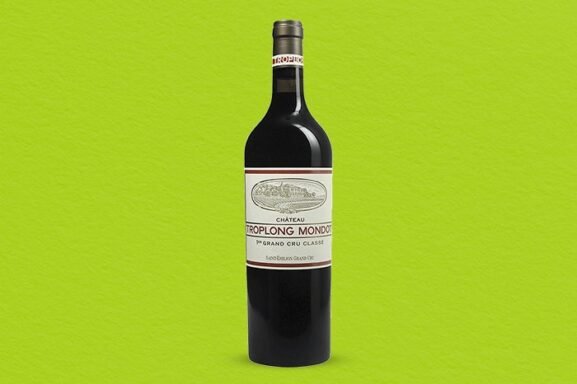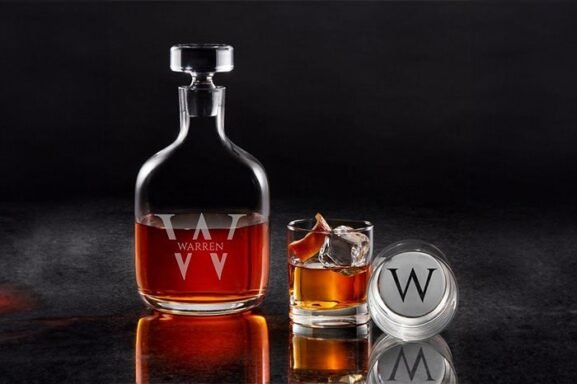Best Burgundy Wine on a Budget
Less than 5% of French wine comes from Burgundy, but don’t let this region’s size fool you. Bottles from this tiny area vary in flavor, style and complexity, making a bottle of Burgundy something truly special.
“Burgundy is no more than 60 miles from North to South, and it produces some of the most beautiful profiles of Chardonnay and Pinot Noir,” says Anna-Christina Cabrales, tasting director at Wine Enthusiast and Burgundy and Rhône Valley wine reviewer. “Winemakers around the world try and replicate the nuances and balance of this region.”
What Is Burgundy Wine?
Burgundy is a central Eastern France region that produces reds, whites, sparkling wines and rosés. From North to South, there are five primary wine-producing areas; Chablis, Côte de Nuits, Côte de Beaune, Côte Chalonnaise and Mâconnais. Each one is made up of different villages, also called communes.
Some of the villages are home to climats and/or lieu dits, both of which are delineated superior vineyards. Each are “very distinct in geology and soil composition, which is primarily clay, marl and limestone,” adds Cabrales. “The decomposed marine sedimentary rocks from the Jurassic era allows the grapes to really shine and is the thread through this region.”
Here, we break down everything you need to know about Burgundy wine, plus some of our favorite bottles.
Our Favorite Burgundy Bottles
Albert Bichot 2021 Domaine Long-Depaquit (Chablis)
Aromas of freshly cut Gala apples, Bosc pear, hay, lemongrass and chalk fill the glass. The palate is coated by mouth-watering acidity, showing flavors of fresh yuzu and lemon grass and extending a long mineral finish. This refreshingly brisk and gentle acidity tantalizes more sips. This wine should be a versatile pairing with many seafood dishes. 92 points. — A.C.
$33.99
Wine.com

Nicolas Potel 2020 Bourgogne
Spicy notes of black cherry, pear skin, green peppercorn, clove, black tea and rose dance around the nose. The palate is treated to cranberry, rhubarb, fresh cherry and the same green peppercorn and clove. Although the finish is bitter and short for now, the wine may benefit from development in the cellar. 90 points. — A.C.
$25.98
Woods Wholesale Wine

Louis Latour 2020 Beaune
Focused aromas of black cherry, rhubarb, wild mint and turned earth come together in the glass for a complex nose. The palate offers deep red cherries beautifully balanced by mushroom, thyme and black tea notes. Drying tannins are balanced by brisk acidity that provides lift to this dark-fruited profile. Approachable now. 92 points. — A.C.
$25.99
Liquors Inc
Burgundy FAQs
Which Grapes are in Burgundy Wine?
Chardonnay and Pinot Noir are the main grapes of Burgundy. “The Pinot Noir exudes beautiful wild and sometimes concentrated red berry tones with hints of black pepper,” says Cabrales. “Its bouquet or floral presentation, backed with a fine stone minerality, captivates me. The moment I smell this, I know exactly where I am.”
Whereas the Chardonnay from Burgundy is “like a bright sunny day,” says Cabrales. “The profile transports you to an open field where you can smell a balance between a fresh tart or ripe citrus basket. These wines’ light herbal notes and then the floral aspect is inescapable.”
Along with these two grapes, there are several others permitted—albeit in much smaller quantities. Some regions can grow Sauvignon Blanc, Sauvignon Gris and Aligoté, which is like Chardonnay.
If you’ve ever had a Crémant de Bourgogne, or sparkling Burgundy wine, it likely used Chardonnay and Pinot Noir as its base blend but Aligoté, Melon de Bourgogne, Sacy, Pinot Blanc and Pinot Gris are allowed in Burgundy sparklers as well.
What Is the Burgundy Classification System?
Like most of France, Burgundy uses a classification system to signal quality. But it can get a tad confusing.
“Think of the classification system in terms of quality level,” explains Cabrales. “The entry will be at the regional level, followed by village and the most prized vineyards sitting at the Grand Cru level. Due to quality standards through the area, there are some Premier Crus, the level before Grand Cru, that some collectors would regard as Grand Cru quality.”
Here’s a look at Burgundy’s classification from the base level up.
Regional Appellations: These bottles are labeled Bourgogne Blanc or Bourgogne Rouge and are more affordable options. They will likely be Chardonnay or Pinot Noir and can come from anywhere in the Burgundy region.
“If you’re looking to present Burgundy to friends who are unfamiliar with the region reach for these wines. They’re delightful, straightforward and easy to drink,” says Cabrales.
Commune or Village Appellations: Wines from here will be labeled with the name of the village in which it’s produced, like Gevrey-Chambertin, Chambolle-Musigny, Beaune, Meursault, Chassagne-Montrachet or Pouilly-Fuissé, for instance. The price tag increases from the regional level.
“These wines are a great window into village terroir and the condition of the harvest for that region,” says Cabrales. “Expect a really balanced display of fruit and a greater expression of earth and terroir.”
Premier Crus: Almost at the top but not quite. Premier Crus can either come from single or multiple different climats.
“These wines are about a specific soil composition and site condition,” says Cabrales. “Expect various alluring profiles that can vary greatly from site to site, even if they are within a stone’s throw from each other. These wines are textured and offer layers of complexity.”
Grand Crus: These wines are the best of Burgundy. Less than 2% of bottles carry this label and therefore are quite expensive.
“These are simply the best and, in many cases, come from some of the oldest vines in the region,” says Cabrales. “These wines are powerful, incredibly complex and arguably some of the best profiles of Chardonnay and Pinot Noir.”
What Is the Chablis Classification System?
Chablis has its own classification system. The majority of winemakers produce bottles in two or three of these categories. Only a handful make wines in all four and Chardonnay is the only grape allowed.
Petit Chablis: Wines with this label can be made with grapes from different vineyards.
“These are fresh wines with a citrus and zesty profile with very bright acidity,” says Cabrales. “Enjoy them in their youth and especially as an aperitif.”
Chablis: These are the most widely available bottles. They can be made with grapes from select villages like Beines, Béru and Viviers.
“Chablis Village is your go-to when you simply want a high-acid mineral-laden wine,” says Cabrales.
Chablis Premier Cru: Wines with this label can come from 40 different vineyards throughout Chabis.
“The profiles can vary due to the exposition and where it sits along the Serein River,” says Cabrales. “Some might present to be a bit more austere or lean while others may exude more fruitiness. These wines have texture and a specific profile.”
Chablis Grand Cru: Wines will this label come from Blanchot, Bougros, Les Clos, Grenouilles, Preuses, Valmur, and Vaudésir.
“Les Clos is the most sought after,” says Cabrales. “It’s the largest of the Chablis Gran Crus and the sunniest. But all are powerful and worthy of cellaring.”
Why You Should Trust Us
All products featured here are independently selected by our team, which is comprised of experienced writers and wine tasters and overseen by editorial professionals at Wine Enthusiast headquarters. All ratings and reviews are performed blind in a controlled setting and reflect the parameters of our 100-point scale. Wine Enthusiast does not accept payment to conduct any product review, though we may earn a commission on purchases made through links on this site. Prices were accurate at the time of publication.
Last Updated: April 16, 2024

